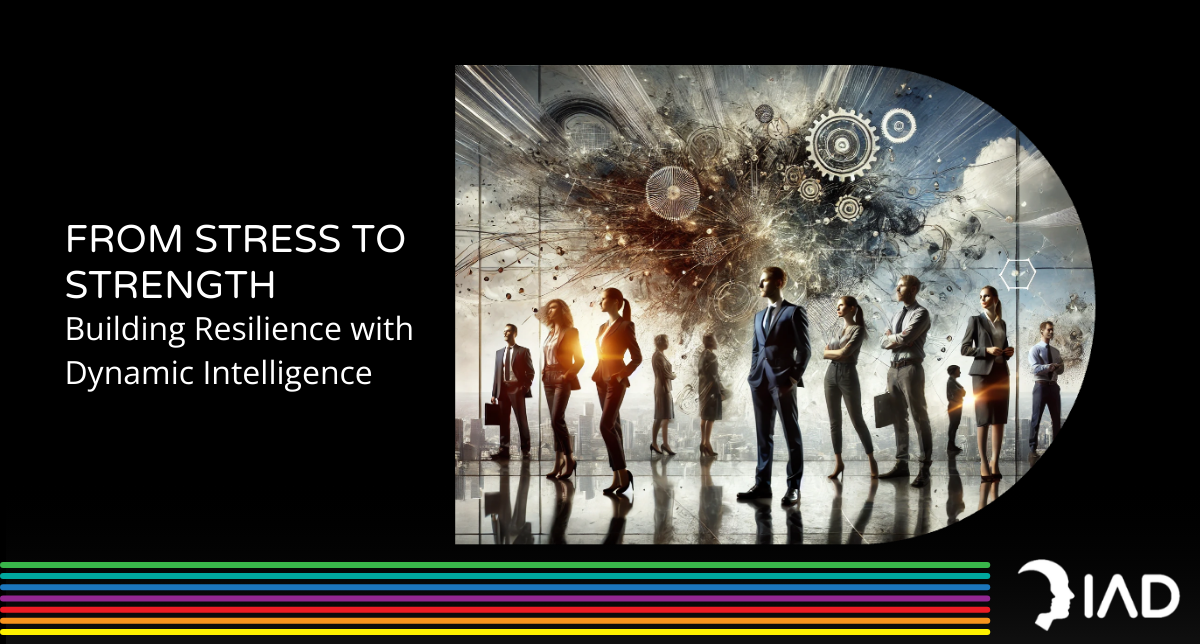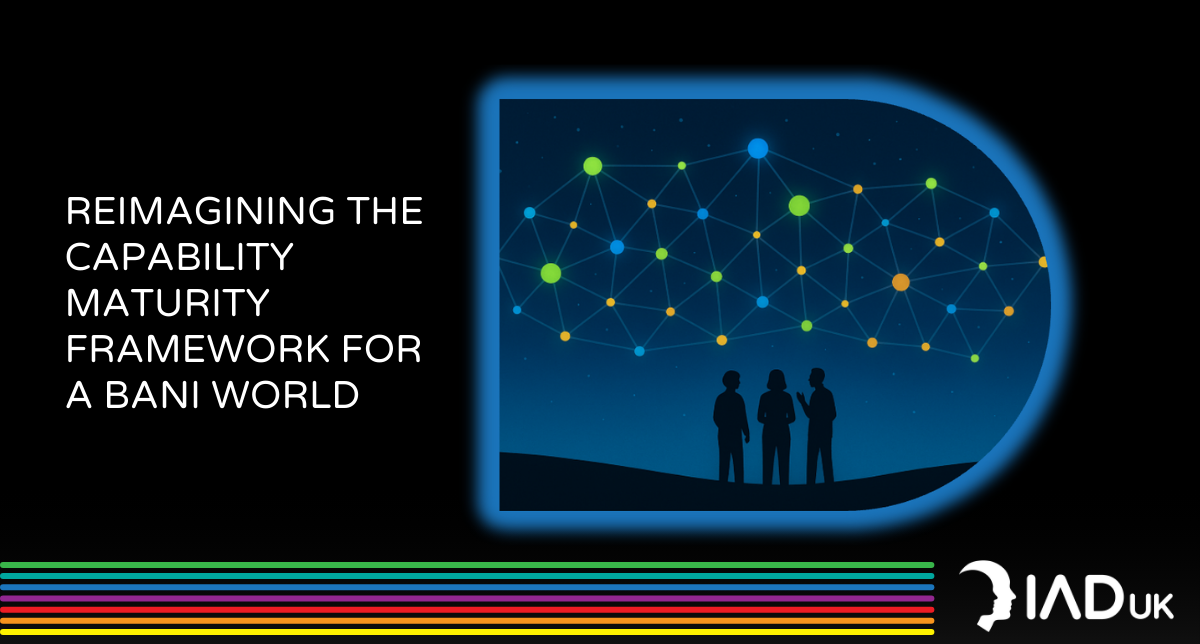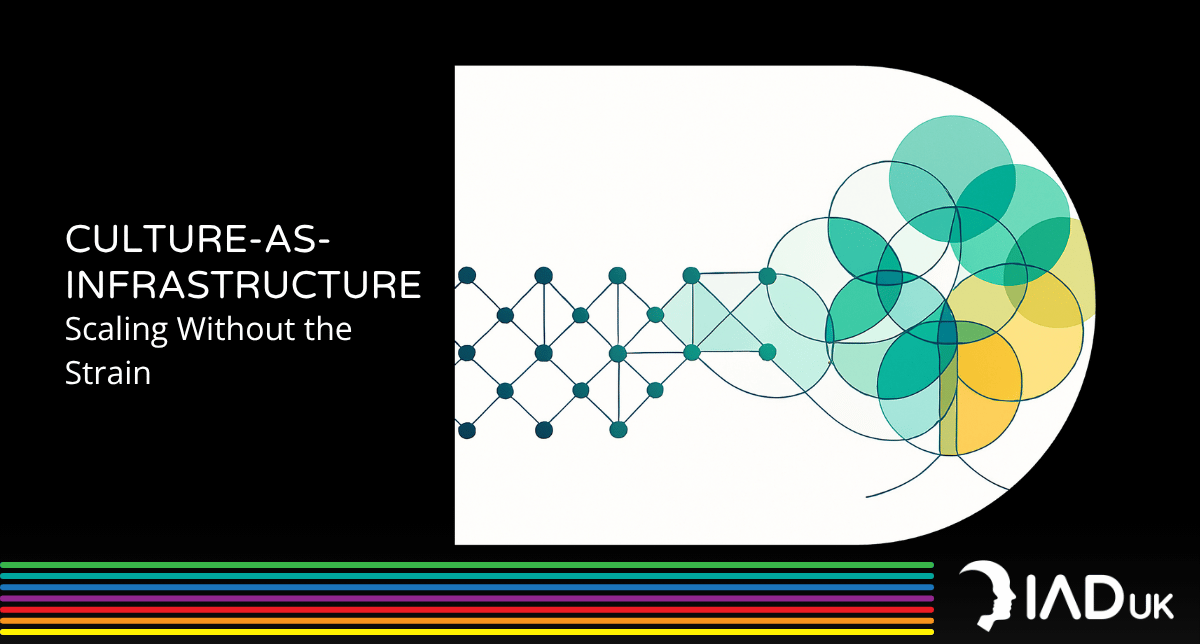From Stress to Strength
How Thinking Agility Helps Leaders Thrive Under Pressure

March is a high-stakes month for many organisations. With the financial year-end fast approaching, leaders face tight deadlines, increased scrutiny, and mounting expectations. Budgets need to be finalised, targets met, and strategic plans adjusted for the year ahead.
The pressure is undeniable—but the real challenge isn’t the workload itself. It’s how leaders process and respond to it.
Stress is often treated as an unavoidable byproduct of leadership e.g., 1, but research suggests otherwise. Burnout isn’t just caused by external demands—it’s deeply tied to how individuals perceive, interpret, and engage with pressure e.g., 2. Two leaders can face the same high-pressure situation, yet one remains calm and strategic while the other becomes overwhelmed. The difference lies in their cognitive approach to stress.
Certain Cognitive Intentions increase stress vulnerability, while others strengthen resilience. Leaders who struggle under pressure often fall into rigid thinking patterns, while those who adapt effectively maintain cognitive flexibility, self-awareness, and a capacity to reframe challenges.
This is where Dynamic Intelligence (DI) makes the difference. Rather than simply enduring stress, leaders with high DI learn to engage with pressure differently—adjusting their cognitive approach to maintain clarity, adaptability, and long-term resilience.
But what exactly makes some leaders more resilient than others? The answer lies in how they develop their Cognitive Intentions…
Resilience is a Thinking Skill
Resilience is often misunderstood. It’s seen as a personality trait, something that some people naturally possess while others do not. But research has shown that resilience isn’t an inherent quality—it’s a cognitive process that can be intentionally developed.
According to H.Arne Maus in his book Getting People Right: Forget About Motivation, leaders who struggle with burnout often share specific Cognitive Intentions that shape how they process stress. These include:
✔ Primary attention: Caring for Others – prioritising external demands over personal well-being.
✔ Perspective: Partner – taking personal responsibility for others’ outcomes.
✔ Mode of comparison: Sameness – resisting change, leading to overcommitment and stress accumulation.
When combined with
External Reference, these Cognitive Intentions create a dangerous loop: leaders overextend themselves, feel trapped by expectations, and experience heightened stress reactivity.
Dynamic Intelligence (DI) offers a way out. Instead of relying on endurance, resilient leaders actively shape their thinking to engage stress differently. DI strengthens resilience by:
✔ Increasing Awareness – helping leaders identify stress triggers and habitual cognitive patterns.
✔ Enhancing Cognitive Flexibility – training leaders to reframe stress, seeing challenges as opportunities rather than threats.
✔ Developing Key Cognitive Intentions for Resilience:
- Observer Perception – enables detachment from immediate emotions, allowing leaders to assess situations objectively.
- Balance between Internal & External Reference – prevents over-reliance on external validation, fostering self-trust.
- Abstract Thinking – helps leaders see beyond immediate pressure and create long-term adaptive strategies.
Without these capabilities, stress doesn’t just affect individuals—it shapes organisational culture. When leaders struggle to manage stress effectively, it spreads through the organisation…
The Cost of Stress-Induced Rigidity
When leaders struggle to manage stress, the impact extends beyond personal well-being, affecting organisational culture, decision-making, and overall performance. Stress doesn’t just influence individual leaders—it shapes the way teams operate, how decisions are made, and whether an organisation thrives or stagnates.
Impact on Leaders
Stress diminishes cognitive flexibility, leading to narrow, reactive thinking. Under pressure, leaders often:
- Default to habitual decision-making, relying on past strategies rather than adapting to current realities.
- Become more risk-averse, avoiding necessary change and innovation.
- Experience self-doubt, particularly when they have an over-reliance on External Reference, making it harder to trust their own judgment [Maus, 2019].
Impact on Organisations
Leaders set the cognitive and emotional tone for their teams. When they react with stress and rigidity, their behaviours ripple through the organisation, resulting in:
- Reduced collaboration – A defensive leadership approach discourages open dialogue and diverse perspectives.
- Short-term survival mode – Teams prioritise immediate tasks over long-term strategy and innovation.
- Higher burnout and turnover – Employees disengage in high-pressure environments where leadership is reactive rather than adaptive 1.
The Cognitive Trap of Stress
Without the right Cognitive Intentions, stress reinforces unproductive patterns:
- Sameness & Partner Perspective – Leads to overcommitment and resistance to change.
- Lack of Observer Perception – Causes leaders to take challenges personally rather than assessing situations objectively.
- Imbalanced External Reference – Makes leaders overly dependent on external validation, leading to indecision and self-doubt.
Organisations that invest in cognitive resilience training see greater adaptability, improved innovation, and long-term performance stability 3, 4.
Resilience isn’t a passive trait—it’s an intentional cognitive shift. But how can leaders actively build it? It starts with three strategic adjustments…
Building Cognitive Resilience
Building resilience isn’t about simply enduring stress—it’s about reshaping how we engage with it. Leaders who develop Dynamic Intelligence (DI) cultivate specific Cognitive Intentions that help them think more effectively under pressure. These strategies provide practical ways to shift cognitive patterns and build long-term resilience.
1. Reframe Pressure as a Cognitive Challenge
Stress triggers automatic threat responses, which narrow perception and increase rigidity. Leaders who struggle with resilience tend to default to Sameness and Partner Perspective, overcommitting and resisting change.
✔ Identify dominant Cognitive Intentions under stress – Assess whether your thinking defaults to over-commitment or self-doubt.
✔ Use DIDS™ cognitive profiling – Map your cognitive tendencies and develop Observer Perception to detach from emotional reactions.
✔ Reframe stress as an adaptive challenge – Instead of viewing pressure as a problem to endure, treat it as an opportunity to rethink strategies.
Leaders who consciously adjust their thinking in response to stress avoid reactionary decision-making and engage more flexibly with challenges.
2. Develop a Resilient Decision-Making Process
Under pressure, leaders often either overanalyze decisions or make impulsive choices. Resilient leaders use Abstract Thinking to take a broader perspective while maintaining cognitive agility.
✔ Introduce a structured “pause and assess” process – Encourage leaders to evaluate whether their response is strategic or stress-driven.
✔ Train teams in cognitive challenge techniques – Build resilience through regular thinking agility exercises.
✔ Balance Internal & External Reference – Leaders should trust their judgment while remaining open to external input.
Decisions become more deliberate and adaptive, reducing errors caused by stress-driven thinking.
3. Embed Cognitive Resilience into Organisational Culture
Resilient thinking must extend beyond individuals—organisations that normalise cognitive resilience build teams that sustain performance under pressure.
✔ Develop stress-resilient leadership training – Shift from skill-based programs to thinking-based development.
✔ Introduce cognitive debriefs – Help teams reflect on how their thinking patterns shape stress responses.
✔ Use DIDS™ coaching – Support leaders in shifting from reactive to proactive stress management.
An organisation where stress is managed effectively, ensuring high performance without burnout.
Leaders who develop cognitive resilience don’t just cope with pressure—they transform how their organisations navigate uncertainty. But resilience doesn’t happen by itself—it requires intentional action…
Strengthen Resilience with DIDS™
Stress isn’t the problem—it’s how leaders engage with stress that determines performance. The difference between burnout and resilience isn’t endurance; it’s the ability to think differently under pressure.
Leaders who develop Dynamic Intelligence (DI) don’t just cope with uncertainty—they reframe challenges, regulate their cognitive responses, and sustain high performance without burnout. Cognitive resilience isn’t about avoiding pressure—it’s about engaging with it in a way that maintains clarity, adaptability, and well-being.
The Dynamic Intelligence Development System™ (DIDS™) can help your organisation:
✔ Reduce decision-making rigidity by developing cognitive agility.
✔ Create leaders who pivot with confidence instead of resisting change.
✔ Foster a culture where stress is managed effectively—supporting long-term performance and employee engagement.
The question isn’t whether stress will occur—it’s whether your leaders are equipped to navigate it without compromising their effectiveness.
Book a call today to bring resilience-building strategies to your organisation.
Alternatively, why not download our comprehensive brochure
Sources:
1. https://affinityhealthhub.co.uk/d/attachments/2-harms-et-al-2017-1554904644.pdf
2. https://pmc.ncbi.nlm.nih.gov/articles/PMC8834764/
3. https://bpspsychub.onlinelibrary.wiley.com/doi/abs/10.1111/joop.12120
4.
https://www.frontiersin.org/journals/psychology/articles/10.3389/fpsyg.2024.1484222/full




